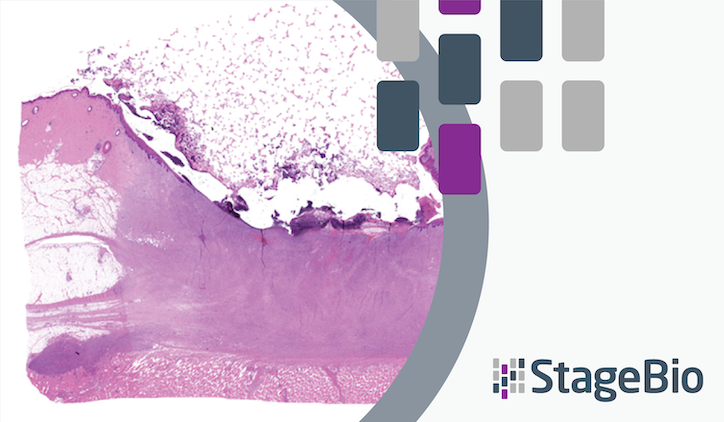The science behind wound healing seems to grow more complex by the day. Advancements in molecular biology and medical device technology are making innovative wound healing products possible that were otherwise unimaginable even a few short years ago. Of course, the more groundbreaking a potential wound healing product is, the greater the need becomes for a qualified contract research organization (CRO) capable of analyzing tissue samples in a timely, efficient manner.
So, if you’re on the hunt for a CRO to conduct tissue sample research for your preclinical wound healing study, here are three questions to ask for help choosing the CRO that will be the most beneficial to your efforts.
Question 1: What is the CRO’s expertise level regarding wound healing studies?
While this question seems the most obvious, the harm that overlooking it can cause to the quality of your final pathology report can potentially be devastating. Ask how many wound healing studies a CRO candidate has handled over the years, and take the time to find out the number of veterinary pathologists the organization has on staff.
In fact, evaluate every CRO in consideration on its scientific and technological expertise across its entire organization; more breadth and depth of experience across various field of study translates into a more well-informed and thoroughly compiled pathology report.
An experienced and well-rounded CRO is invaluable when designing wound healing studies because its combined wealth of knowledge informs the precise type of animal model to use, helps identify appropriate study timepoints, and can help you design your study in such a way that it accounts for FDA requirements.
Question 2: What value-added services does the CRO offer?
If a CRO candidate gives you the impression that they’re more accustomed to a straightforward transactional interaction versus a consultative partnership, it may be time to remove that candidate from your short list.
Especially given the aforementioned complexities of wound healing science, you need a CRO willing to go above and beyond the traditional process of reviewing your tissue specimens and returning a pathology report. Learn from your CRO candidate how you can expect to communicate with the pathologists working on your wound healing research. Do you get the sense that they will effectively work as an extension of your team? Or does the CRO leave you feeling like the pathologists will be hard to reach?
Also, take note of any CRO candidate that offers helpful guidance straight out of the gate, even during the discovery phase of a project. A CRO’s willingness to take a vested interest in your research early on is a strong indicator of a transparent and responsive working relationship going forward.
Question 3: What can you expect to see in the pathology report?
If you’re satisfied with the answers you received from a potential CRO candidate regarding questions one and two on our list, then you can feel fairly confident about the quality of the final pathology report the CRO’s team will deliver.
First and foremost, an experienced CRO with board-certified veterinary pathologists that have familiarity in evaluating wound healing studies will be able to produce a dynamic report specifically tailored to your needs. A CRO with experience in wound healing studies and applicable laboratory methodologies (special histochemical stains, morphometry, immunohistochemistry, etc.) is much more likely to have developed scoring systems and endpoints that help differentiate the nuances related to your wound therapies. Additionally, a CRO team that takes a consultative approach throughout every phase of your wound healing study is also likely to be more willing to meet with you after the delivery of its report and walk you through its findings. Depending on your needs and prior experience with preclinical research, this level of guidance can be invaluable.
As for the final pathology report itself, have the CRO candidate walk through what you can specifically expect to see in it. Important elements include data summary tables and graphs, high-quality pathology images with annotations, along with a scoring system that makes interpretation relevant and user-friendly.
Conclusion
Finding and partnering with a CRO capable of delivering a high-quality pathology report for your wound healing study takes due diligence. And as the complexities behind wound healing science continue to advance, the need for an experienced, knowledgeable CRO willing to guide you through the analysis of your tissue samples will only continue to rise.
Getting the answers to these three questions will help narrow down your list of CRO candidates—and hopefully help you settle on a CRO that will work alongside you in creating a dynamic, well-informed pathology report.
At StageBio, we not only have years of experience across various fields of pathology—including medical device pathology—but we also take a consultative approach with each of our clients to ensure the most thorough and informative pathology report for their wound healing study possible.
If you’d like to learn more about our services for wound healing preclinical studies, contact us at info@stagebio.com.
